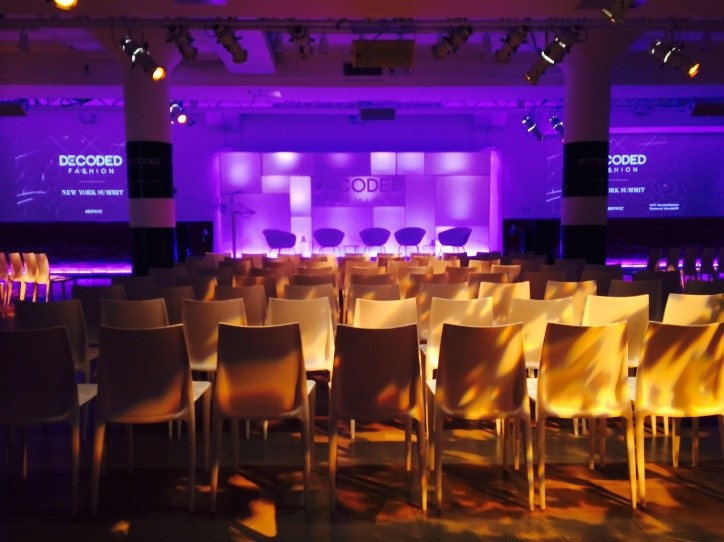Talking fashion technology has become a largely consumer oriented dialogue. Wearables, customer experience, personalization, are all buzzwords that come up across topics and up and down market. Fashion and Tech (from both sides) are wrapped up in being of-the-moment, which takes away from the efforts put towards long-term change and realignment. So many of the more deep-rooted operational issues remain covered and unchanged while we endlessly discuss the newest round of wearable devices that will be abandoned in turn.
Deep change takes more capital risk, and more bottom-up operational auditing. However when presented with an opportunity like this moment of flux in the fashion industry, those are the changes that reap the most benefit. We should all take the long-view.
Many of the press-oriented conversation pieces begin to feel like anecdotes for brands to become part of the discussion and to say they were among the first. The short-term gains experienced by certain brands are becoming too common for any brand to really stand out, but others are still wanting to participate for fear of being left behind. With all the transient and already outdated efforts we’ve seen in fashion and tech, it’s exciting when an idea or a project truly brings us forward.
A couple of these bright moments occurred at the recent Decoded Fashion Summit in New York City, attended by an ever growing mix of fashion, business, and tech decision makers and innovators.
In a “fireside chat” with Symphony Commerce, a service for outsourcing certain infrastructure needs to get companies through their growing pains, the conversation shifted from product to back end. How can scaling business in fashion and retail make the leap in revenue growth without equally increasing their overhead? What does it look like when a five-person startup has the efficiency of a Yoox or an Amazon? These are the questions that lead to growth in an industry that needs to learn new ways of scaling while remaining agile.
Some examples of rock stars in the fashion and tech space growing their operations by scaling out their user experience are Rent the Runway and Rebecca Minkoff. Rent the Runway launched their subscription service which founder Jennifer Hyman sees as her dream closet, constantly rotating. “Imagine there is a trap door in the back of your closet,” she suggested. “And it leads directly into the Rent The Runway warehouse.” The RTR philosophy of smarter consumption is also one of their great assets. It provides a compass for their business growth, and gives their customers a conscious alternative to fast fashion.
Rebecca Minkoff’s new retail location might be brick and mortar, but there is so much embedded tech that the transition from online to off becomes seamless, to their benefit and the customer’s. They have the advantage of having participated, with great foresight, in the Fashion & Tech dialogue from the beginning, giving them the knowledge and the access to partnerships that made the dream of this store to a reality. Uri Minkoff, CEO, spoke passionately about the choices they made in building their brand’s retail embodiment. The key moments they looked at started with the moment of entry, through to discovery, the approach and interaction with the stylist, lighting, fitting rooms, the checkout, and even getting into post-visit follow up.
When we think of fashion, we obviously think of product. These examples speak to the fact that technology can really enable us to re-imagine not only our products and our sales strategies, but also our systems. As brands and businesses we should be thinking about infrastructure and logistics, becoming better and more efficient within our own walls. This will inevitably align with an improved experience for our customers. And this is a place where technology can certainly enable change within fashion companies, most notably amongst startups who are still nimble and who rely more on experimentation than big data to inform their decisions.
While certain tech tools, including the media buzz generated by being aligned with tech, are enabling companies to make short-term gains, it is the companies that are looking at the long view, or bigger picture, who will get the most out of this mergence of fashion and technology.
Photo Credit: by CC OS Fashion




